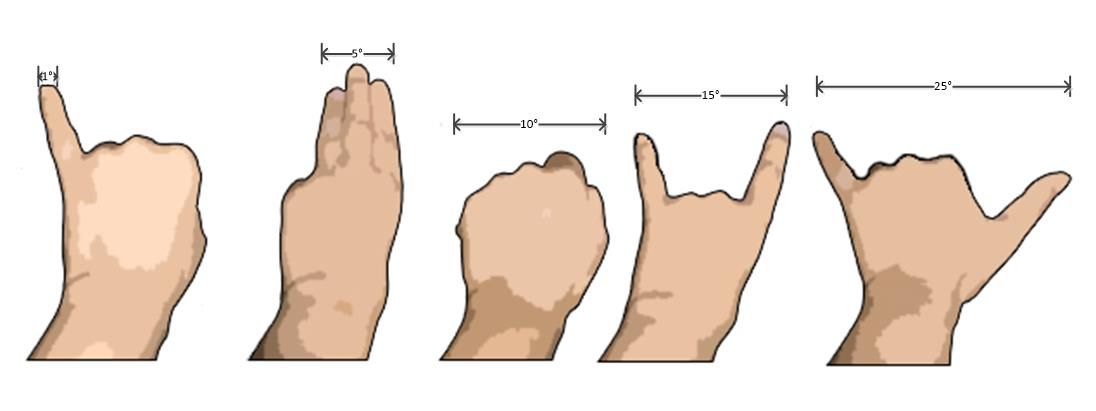
| Added | Tue, 20/12/2016 |
| Источники |
If the observation of terrestrial objects, the witness can easily estimate their approximate dimensions, based on the knowledge about surrounding objects and terrain, then do the same for UFO's not so simple. The main objects to which he can Orient in the sky are clouds: their appearance is always possible to tell approximately what altitude they are, thereby estimating the height of the observed object.
When we know the approximate height of the observed objects, we can evaluate its size and speed. The main and most common method of such evaluation is the measurement of angular distance.
Conventionally, the sky can be represented in the form of a sphere, where the center is the observer. Thus, if we have two points on the sky, then the angular distance between them will be the angle formed by lines drawn from these points to the eye of the observer.
Only in the circumference 360, and half is 180 degrees. Thus, between two opposite points on the horizon 180°. The angular distance between the horizon and Zenith is 90°. The most well-known and simple method is the determination of degrees with the hands. [1]

This method can measure both the angular dimensions of the objects and to estimate their angular velocity in uniform motion of an object. To estimate the angular velocity of the object, you need to determine the angular distance which it passes per unit time. For example, if the object is the angular distance of 30 degrees for 10 seconds, then its angular velocity relative to the observer is 3 degrees per second.
The transition from angular size and speed of the object to the line at a known distance to the object (or its altitude) is performed using known trigonometric ratios.
Defining the linear dimensions and the speed of movement of an unidentified object, you can try to identify it, comparing these parameters with similar parameters of known objects.
So, different models of aircraft have different flight speed. So, combat strike aircraft have a significantly higher speed than aircraft of civil aviation. However, the average speed of the plane can make its value approximately equal to 850 - 900 km/h. [3] Thus, if the linear dimensions and the speed of the object correspond roughly to that of the plane, according to the principle of "Occam's razor", the object likely is a plane.
Conclusion
Using this known method, an eyewitness can estimate the angular size and speed of the observable object. To calculate the linear dimensions and the linear velocity it is not necessarily enough to provide data to researchers.
Translated by «Yandex.Translator»
Log in or register to post comments
